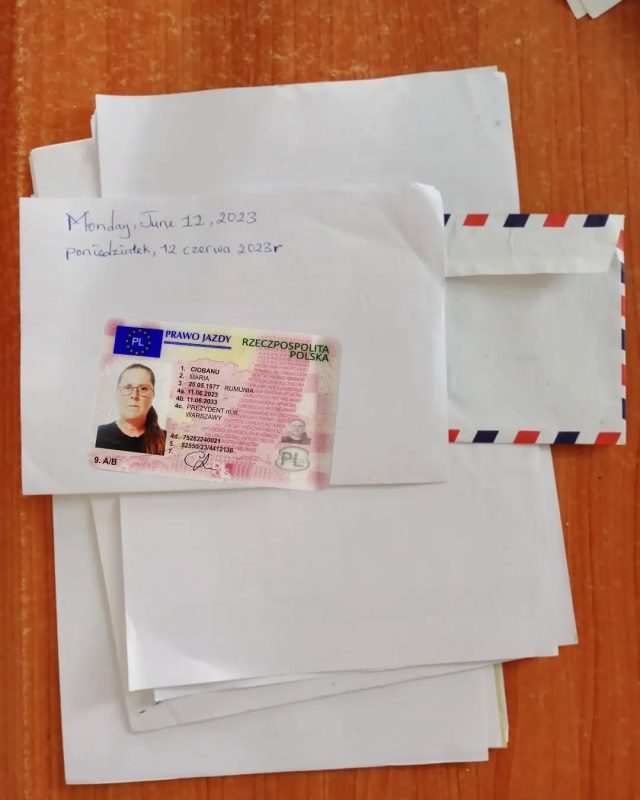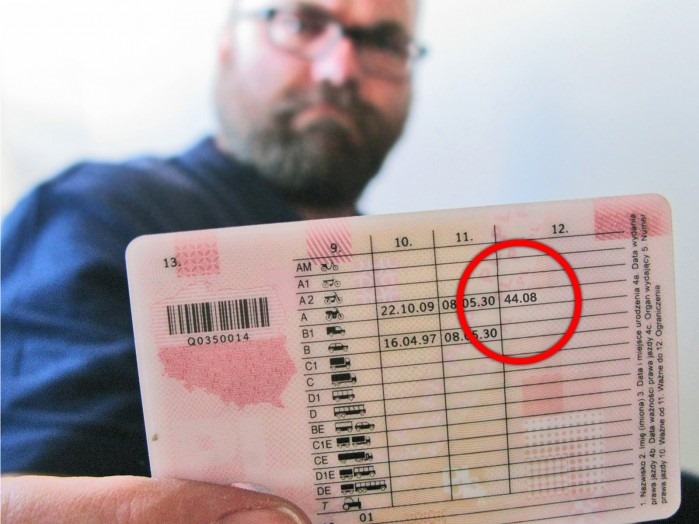This Is The History Of Category A1 Regulations In 10 Milestones
페이지 정보
작성자 Cecil 작성일25-02-27 13:34 조회3회 댓글0건관련링크
본문
 Category A1 Regulations and How Fragomen Can Help
Category A1 Regulations and How Fragomen Can HelpThe regulations for Category przepisy kategorii a1 are becoming more important for companies who employ employees from abroad. Failure to comply could have a significant impact on productivity of employees, and can result in expensive fines. Fragomen has a solid government-based strategy for social security coordination. We can help you optimise your global mobility programmes to ensure compliance from day one.
1. Vehicles that have a maximum mass of up to 750 kilograms
Vehicles that are not considered to be category kategorię a1 vehicles include powered cycles, two and three-wheel mopeds and motorized invalid carriages and a few single-axle tractors. These types of vehicles are usually used for work or transportation and may have restrictions on the maximum speed they can drive at.
The weight of the vehicle is often used to classify the vehicles that have driving licenses. This includes the weight of the vehicle unladen and any other accessories or equipment that it is equipped with. It also excludes any goods that are being transported. It is crucial to know the vehicle's category when registering it or applying for a license.
Drivers can drive vehicles with a maximum authorized weight (MAM) of up to 3,500 kilograms, and up to eight passenger seats. It is also possible to couple a category B vehicle with a trailer weighing up to 4,250 kg MAM. This license can be combined with category C+E, which allows the driver to drive vehicles up to 16,000 kg MAM, and a trailer of up to 8,250 kg MAM.
The category A1 driving license is a two-stage licence that requires you to first pass the driving test for Category A2. This license permits you to drive a small motorized vehicles, such as mopeds and two-wheeled vehicles, with a a maximum engine capacity of 125cc, and an output/mass ratio of not more than 11 kW. This license is only available to people who are older than 16 years.
2. Vehicles with a maximum mass of 750 kilograms when combined with a trailer
A vehicle in category B may be combined with a trailer up to 750 kilograms maximum authorised mass (MAM) without the need to obtain a separate licence. The MAM of the trailer is usually indicated on the vehicle's chassis plate. If the total (plate) weight of towing the trailer and the vehicle exceeds 750kg, code 96 is required to be added to the Category B driving license.
Drivers who have a category-B driving license are able to drive small caravans, light lorries, and private cars. They are also permitted to be able to tow O1 and O2 trailers if the total maximum allowed weight of these vehicles is not more than 3.5 tonnes. Category B drivers are allowed to tow smaller O3 trailers when the vehicle's weight at rest is less than or equal to the maximum MAM of the O3 trailer.
Drivers who want to operate larger motor vehicles and caravans must take a category C driving licence. They will then be able to drive a bus for more than eight passengers and one or more trailers with a total trailer weight of 775kg. After qualifying for category D, the driver may opt to change to category DE and tow a trailer that has 12,000kg gross weight. The minimum age for obtaining categories DE and D is 23 years. Physically disabled drivers can drive up to 15kW on motor bikes and category A1 or D vehicles if they hold a provisional category B licence.
3. Vehicles with a maximum permissible mass of 750 kg in combination with a motor caravan
It is essential to know the rules and regulations governing this kind of operation if you plan to drive a vehicle with the maximum permitted weight of 750kg in combination with a caravan. These regulations are described in the Road Vehicles (Construction and Use) Regulations.
The rules for this type of towing are complicated and can differ depending on your licence category. To determine what you are legally permitted to do, check the back of your driving licence card. The back of your driving licence card will show the dates of start and end of the category you're licensed in. It should also indicate what kinds of caravans and vehicles you are allowed to drive.
It is recommended that the trailer's loaded weight should not exceed 85 percent of the vehicle's weight unladen. This will help you maintain your stability when towing. It's also a good idea for you to practice driving your vehicle and trailer on a road that is open before you take to the road.
A Category B license holder is able to drive a car up to 3,500kg Maximum Authorized Weight (MAM) when combined with a maximum authorized mass (MAM) trailer. They are also permitted to drive up to two trailers simultaneously provided that the total MAM does not exceed 7,500kg. However they must ensure that the towing vehicle and trailer are properly connected and that the trailer has working brakes. This is true regardless of whether the trailer is connected via an inertia brake, or an overrun system.
4. Vehicles with a maximum permitted mass of 750kg in combination with an armoured vehicle
The category B driving licence typically entitles drivers to drive vehicles and trailer combinations up to 8250 kg MAM. It also allows them to drive minibuses with up to eight seats and towing trailers of up to 750kg MAM. Physically disabled drivers who have category A entitlement can also ride motor tricycles up to 15 kW.
Drivers with a category A1 license can ride motorbikes that are light. These can have a cylinder capacity up to 125 cc, przepisy kategorii a1 and a power-to-weight ratio of up to 0.1 kW/kg. They can also drive motor vehicles with a cylinder size of up to 50cc and mopeds with two or three wheels.
In certain states, drivers who have a category A license may also drive vehicle combinations consisting of a tractor unit along with a trailer. They must, however, comply with the requirements for axle spacing for the tractor unit-trailer mix. These requirements are displayed by the manufacturer on a sheet that is attached to the tractor.
Drivers of category C1 vehicles are able to drive vehicles that have a maximum permissible mass of between 3,500 and 7,500kg with a tow vehicle. They are also able to drive category C and category D vehicles, which are designed to transport goods or passengers for a particular purpose. These vehicles must be equipped with a seating area for passengers and a bathroom. They may also be fitted with a refrigerator, freezer or other gadgets.
5. Vehicles that have a maximum mass of 750 kg combined with an ambulance
This category allows you to drive trailers and vehicles with a maximum authorized mass of 750 kg in combination with an ambulance. This category includes motorcycles, trikes and trials e-scooters. It also includes smaller motor vehicles that do not have a passenger seat. Minibuses are also available that carry up to 8 passengers. The Government website lets you check what vehicles your driving license permits.
Nontransport response vehicles, ground ambulances and neonatal ambulances must be equipped with a horizontal reflective band permanently affixed to the sides and rear of the vehicle body. The band must be of a color that is in contrast with the background of vehicle body. The name of the EMS agency must also be permanently affixed with a font with a minimum height that is four inches.
In addition to the previously mentioned markings, a nontransport response vehicle must have fixed communication equipment that allows direct two-way voice communications between the air ambulances and the EMS vehicle identified by the state for its primary transport service area. This could include communication via commercial mobile radio services (CMRS) or private mobile radio services (PMRS). During transportation, the EMS agency must keep the drugs and drug kits in a secure storage container or a bracket that is approved.
Additionally, any vehicle that is a part of a rescue team or an emergency response unit must be fitted with a defibrillator that is onboard and be marked with appropriate symbols to identify its use. These markings should not suggest or display a specific level of patient care unless the EMS agency has paramedics on staff at all times.
6. Vehicles that have a maximum weight of 750 kg combined with a hearse
The maximum allowed mass of a vehicle (MAM) is the amount it is designed to carry under normal conditions. This includes the weight of the vehicle as well as the driver, and egzamin na prawo jazdy a1 all the components normally used in the vehicle. It also includes vital fluids, such as oil. This information is typically found in the owner's manual of the vehicle or on a plaque. If you drive a combination of a category B vehicle and a trailer your licence generally allows you to tow up to 8.25 tonne MAM.
You can drive a combination of the category B motor vehicle and a trailer with the maximum weight allowed of up to 7,500 kilograms if you have a category B license that was issued at least two years ago. the code 96 is not present on the driving licence. This exemption is for vehicles that aren't categorized as lorries, and have up to eight passengers plus the driver. This includes land tractors and work vehicles, as also motorized quadricycles.
You can also drive a combination of a category B car with a trailer with an authorized maximum mass of 750kg or egzamin Na prawo jazdy a1 more if you have an authorised category B license and code 96 is not listed on your licence. This exemption is only applicable to vehicles that are driven on public roads and are not classified as lorries or egzamin Praktyczny a1 trailers. This exemption is also applicable to vehicles that are driven on private roads that are not classified as lorries or trailers, however they are used to transport funeral items.

댓글목록
등록된 댓글이 없습니다.
